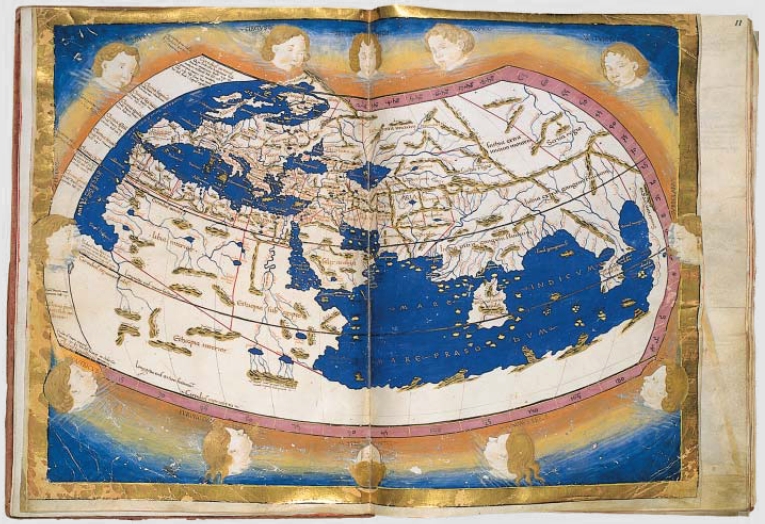There hasn't been a thread about this that I can find so I may as well start one. THIS IS NOT AN ANCIENT ASTRONAUT THREAD!!! There has been an argument among scholars for some time now about the voyage of Magellan's from 1519 to 1522 where he discovered the straits that the tip of South America now named after him--the Straits of Magellan. The problem is, the map he used to get there already had the straits on them! But even stranger, WHO made this map and how did they know about the Straits? No one is sure today exactly what map Magellan used but it is generally agreed to be a form of the Piri Reis map:

Piri Reis was a Turkish general whose map is a copy of a copy of a copy ad infinitum. On the left it shows an area of Argentina called Patagonia and on the right we part of Africa and Spain. At the bottom we see a blank area with a jagged sort of border. That's pack ice. The indented area by the ships is the entrance into the straits. Remarkably, we see what appears to be part of Antarctica (not officially discovered until 1819) and a group of islands that appear to be, for all the world, the South Shetland Islands off the coast of Antarctica.
A modern map of Patagonia:

Comparing it to Piri Reis, we see we see that bit of land jutting out from Patagonia and the entrance to the straits under that. Now, it's much further south than what Piri Reis shows but, again, we're dealing with a map that was a copy of many previous copies so things are out of scale. Africa and Spain are also grossly out of scale with South America. Some try to say that the hump of land is not Patagonia but the entire hump of South America formed mostly by Brazil!! This would make the map so grossly out of scale as to be worthless. Magellan could never have found the straits if this were the case. Furthermore, the compass circle off the coast of Patagonia shown on Piri Reis sits just about where the Falkland Islands sit and it would make sense that this expedition--whoever they were--would have used it as a navigational aid and to take some measurements. The Falklands are shown on the modern map for comparison.
So the question is, who made this map and when? Gavin Menzies insists it was the Chinese. He's taken a lot of heat from the scientific community but that same community offer no answers at all. The Chinese or Koreans definitely did undertake a global mapping expedition because of the Kangnido map that dates from no later than 1402, well before Columbus. It is being housed and preserved in Japan:

This map shows Korea, Japan, China, India, Central Asia, Mongolia, Saudi Arabia, Africa and Europe in remarkable detail for its time. Somebody had to voyage at some point to produce a map like this.
In the early days of exploration, no one was even sure what was beyond the equator. To make up for it, they invented a "counterland"--a fictional land to take up the bottom space on the map so it didn't look so barren. It was purely decorative and did not resemble Antarctica in any way and was not meant to since no one even knew there was an Antarctica then:

Or did they? The Oronteus Finaeus map of 1531 tells us that
someone knew about it. Dividing the map in half, the right half depicts Antarctica with shocking accuracy. The tips of South America and Africa (with Madagascar) and clearly visible and the land mass in question is given its own projection so this is clearly NOT a mere counterland.


The cartographer, Martin Waldseemuller, drew a map showing the isthmus of Panama in 1507. The map shown below is Waldseemuller's map. In the small inset at the top right center, one can see the isthmus clearly drawn. The problem is it wouldn't be officially discovered until 1513 by Balboa, six years after Waldseemuller drew it:

I don't want to talk just about maps. There's a lot of strange stuff we have found about the ancient world but this post will kick it off.













 Threaded Mode
Threaded Mode